On day 2 of the RE+ trade show, we made an attempt to visit many of the lesser-known manufacturers, rather than visiting only the big names. Of course, when the big names brought new technology, it was time to say hello to them, too!
See our RE+ Day 1 solar panel update
RedFlow’s residential flow battery is available in the United States on a ‘developing regional basis’. What this means is that while the company is officially selling in the U.S., they are restricting their residential sales to regions that are expected to produce higher sales volume, so that operations and maintenance costs will become financially viable.
This might be the first residential flow battery that is available for sale in the USA.
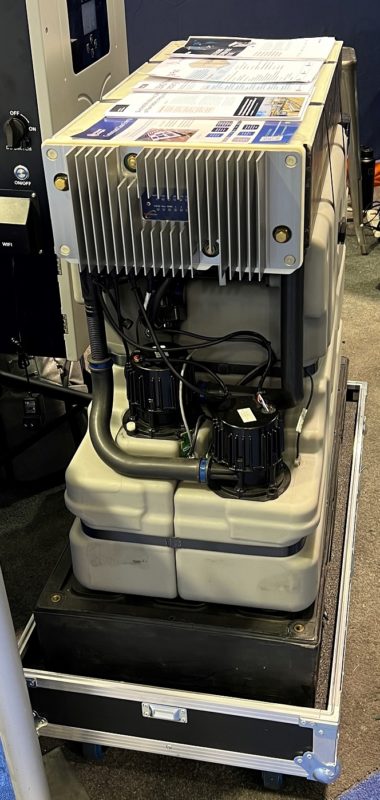
Currently, the company is deploying a 2 MWh facility in California made from 192 of its 10 kWh 48 V ZBM3 building blocks (each similar to the residential unit above).
The company representative suggested that selling ten or more units in a tight geographic area would make sense as the company scales into the US marketplace. This looks like an opportunity for a hard working residential solar sales person to get into a new market.
SolarArk is a Texas solar inverter manufacturer that I think everyone (including myself) needs to learn more about. The feature rich on/off grid hardware looks to be built like a tank – the company describes their units as being ‘Electromagnetic Pulse Hardened’.
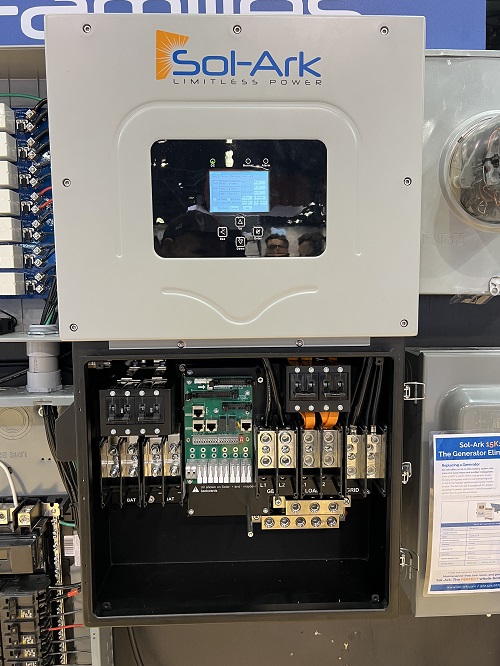
SolarArk and RedFlow announced that their hardware is certified to work together in commercial setups. This aligns with SolarArk’s announcement that they now have larger 30 and 60 kW commercial units available for sales.
BYD displayed a mock up of their ‘blade’ battery cells. This hardware is a third generation battery technology that increases product density. Originally designed to be deployed in cars, these cells have moved into the stationary market as higher energy density has been demanded.
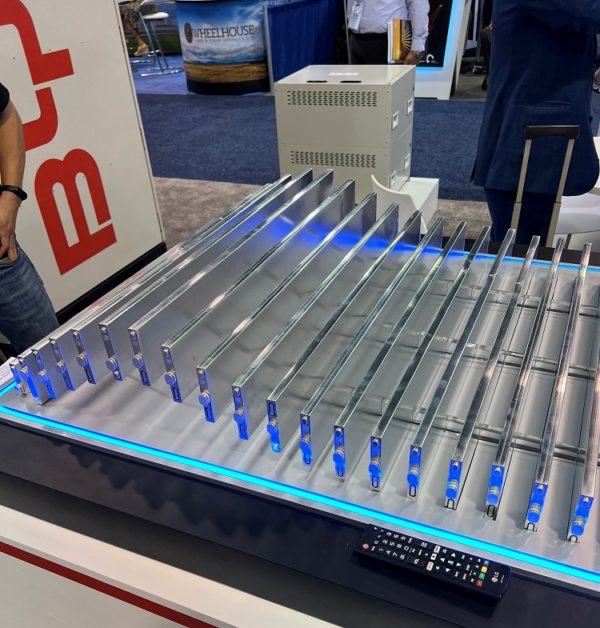
The lithium phosphate battery can be assembled in a new BYD commercial cabinet – below – which is inverter agnostic. The cabinets accept up to twelve 7.5 kWh battery racks allowing up to 90 kWh total per unit.
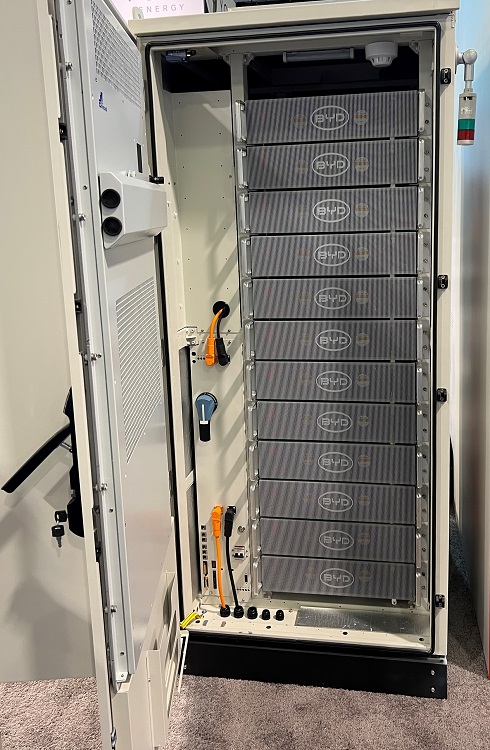
BYD also released a new slim residential battery that can be stacked vertically in 5 kWh increments, or mounted on a wall
Kehua Tech has been making UPS systems since 1988 – that’s thirty-four years. In that time they’ve learned to design systems that, when the electricity goes out, have a transfer time from grid electricity to battery of just 20 milliseconds.
That experience is carried over to their hybrid inverters and storage solutions.
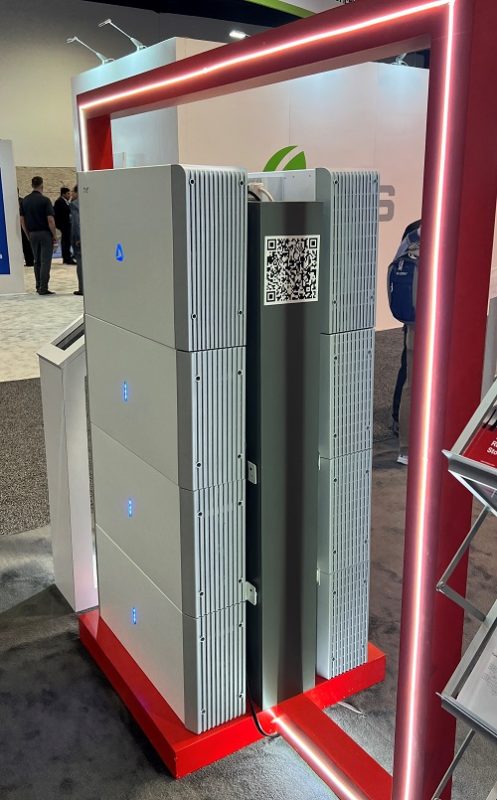
The company is launching this new hybrid inverter line that varies from 7.6 to 12 kW, and can be stacked – up to four units. These LFP batteries are 5 kWh each and can themselves be stacked in three to eight unit combinations.
The company is seeking US distribution channel partnerships.
EPC Power was recently purchased by Goldman Sachs. Based in the US, EPC Power is one of the manufacturers of utility scale inverters that qualify for the domestic content requirements found in the recently signed Inflation Reduction Act.
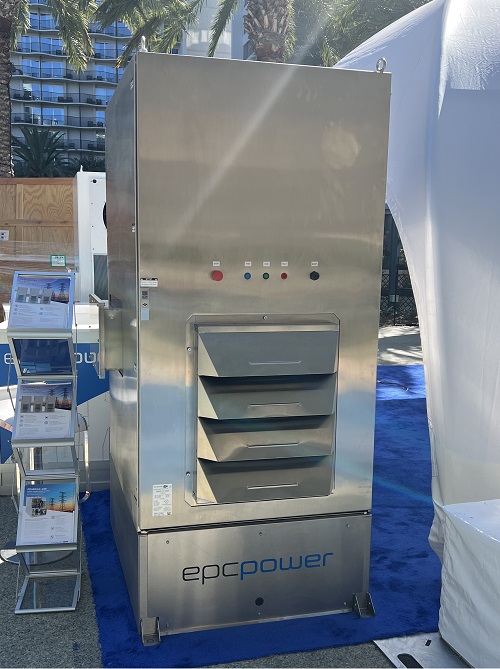
Data from individual solar panels passes through the microinverters to its individual wifi connection, and is relayed through a mesh network to other microinverters and to an Energy Communication Unit (ECU-R, ECU-C, or ECU-B). The ECU models are gateway units that connect to the internet and AP Systems data dashboards three times faster than power line communications (PLC).
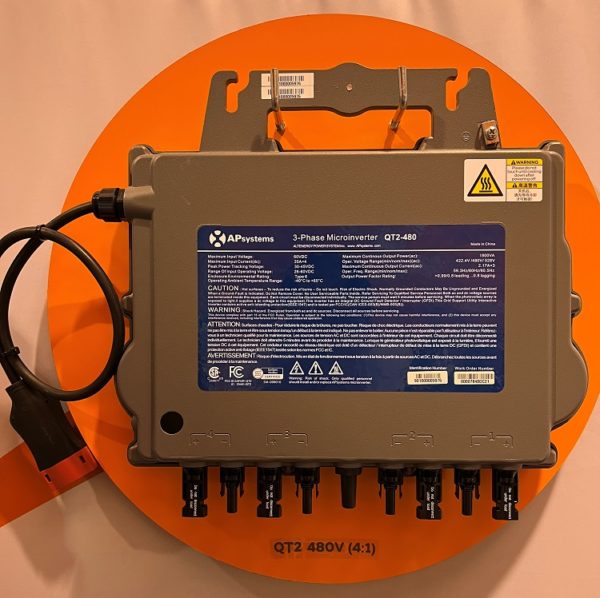
Fox ESS is another company that is expanding into the United States. Fox is currently deploying a portfolio of 50 projects into the country, and they are seeking new partners. The company is partially or completely owned by Tsingshan Group, a mining company (batteries above). The representative touted Tsingshan ownership as one of the company’s strengths, ensuring pricing and supply chain stability.
This content is protected by copyright and may not be reused. If you want to cooperate with us and would like to reuse some of our content, please contact: editors@pv-magazine.com.
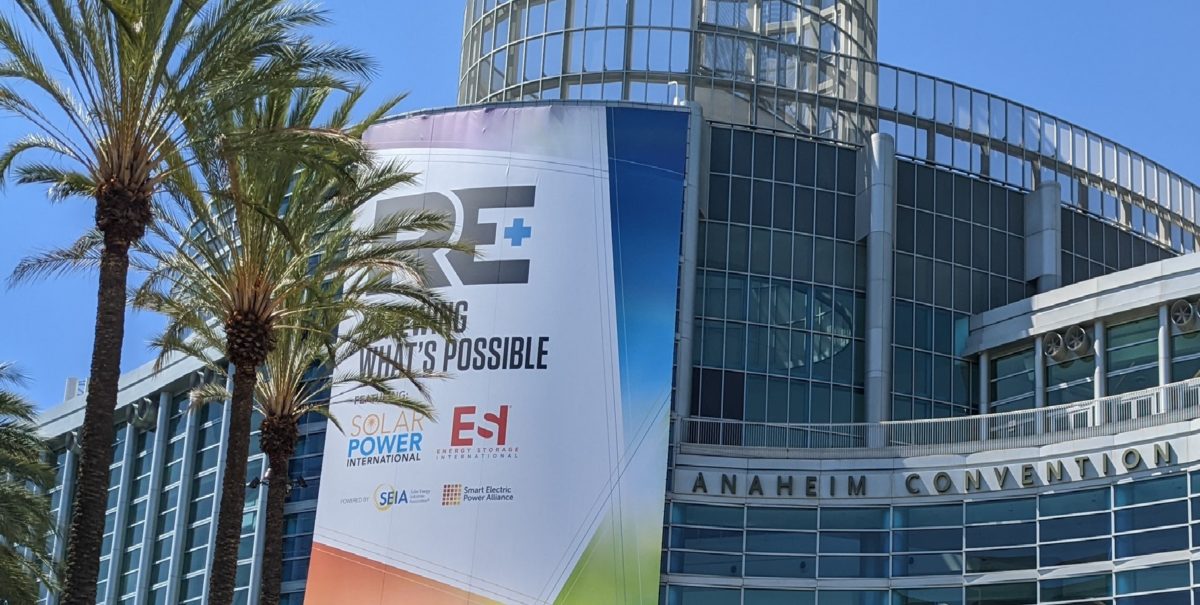
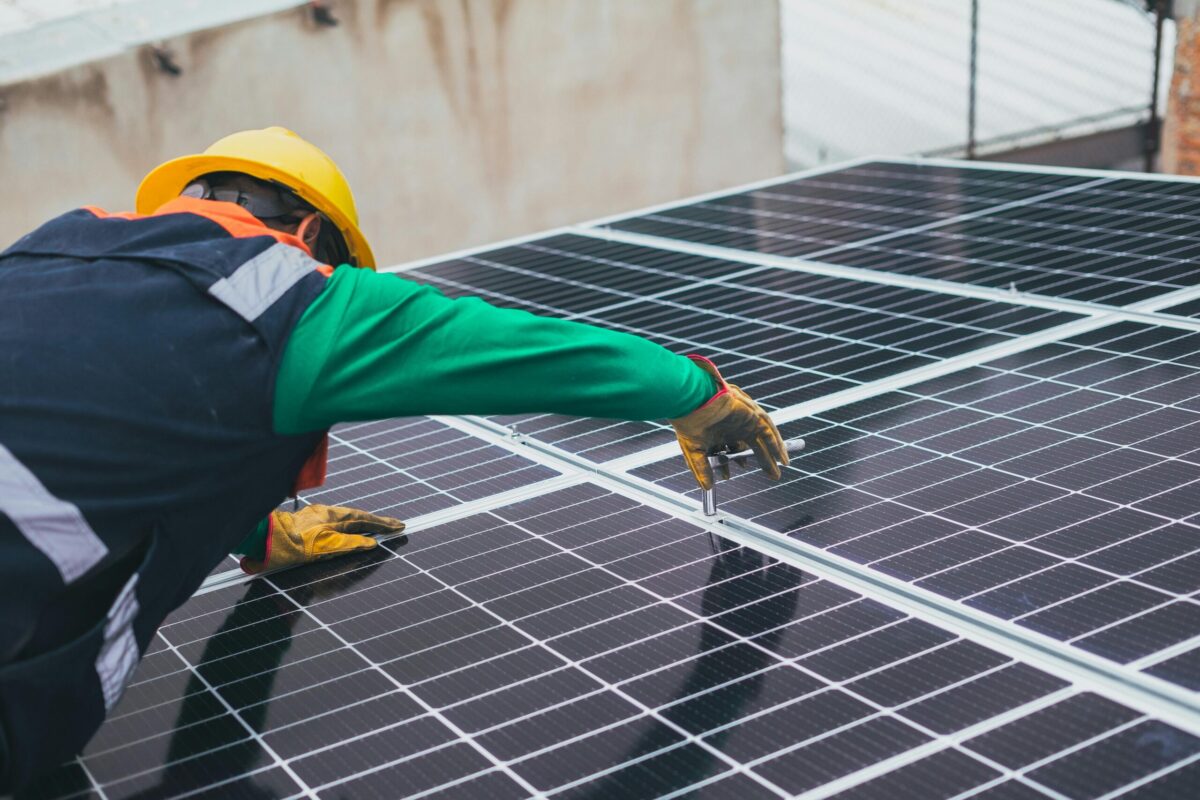





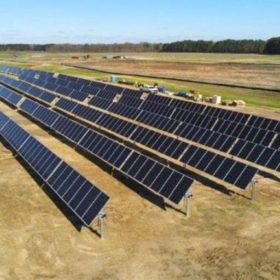
I looked up the Redflow Zcell price and found this on solarquotes.com.au: “The Redflow Zcell (a 10kWh battery) cost around $12,600 AUD, not including inverter or installation.” That’s $8,077 US dollars right now which is $1.26/Wh. Whereas I built a 14.3 KWh battery using LiFePO4 cells for about $0.17/Wh. My battery was a little over $2,400 but an equivalent 14.3 KWh Redflow battery would be $11,550 US dollars. So I have no idea why anyone would even begin to consider buying one of these for their home. Even if the flow battery lasted 30 years, it would still cost substantially more than the lithium alternative. On top of that, the flow battery has moving parts with fluid pumps that have to constantly be running and more complicated machinery than a simple, no moving part, lithium battery.
With the Gen 3 ZBM coming online they expect substantial cost saving. There are also other advantages of Redflow’s flow battery over lithium, not a fire risk, can be cycled down to 0% without damage, doesn’t degrade over time, is fully recyclable, relies on non-rare earth minerals which are easily accessible.
I would not buy lithium as I had a power pack in the car driving that actually started on fire. No way.
There’s extremely low fire risk with LiFePO4 with a quality BMS. The The nickel-cobalt-manganese types do have more fire risk if not managed properly. I’ll be interested to see the new prices for the Gen 3 ZBM but am not holding my breath.
Concerning car fires, an Oct 2022 Autoweek article said sales and accident data compiled from the Bureau of Transportation Statistics and the National Transportation Safety Board show that hybrid (gasoline-burning/electric) vehicles had the most fires per 100,000 sales at 3,474.5. There were 1,529.9 fires per 100k for pure gasoline burning vehicles and just 25.1 fires per 100k sales for electric vehicles. So you’re much more likely to be burned alive in a gasoline powered car than in an EV. Some people love to sensationalize news about electric cars and other new technology and try to cast them in a bad light. I’m not sure why – just a weird quirk of human psychology.
You are correct about the fire risks stats Dan. I think the fear is if someone plugs their EV in their garage and in the middle of the night it it catches the house on fire. Not so much while driving when you would be able to exit the vehicle no matter if it is an ICE or EV. ICE Vehicles won’t ignite themselves while parked. I have a Leaf and am not concerned about it, but it has crossed my mind a few times when plugging in.
If I had the know how to build a LiFePo4 setup like you, those are impressive stats. That said, I am excited about the potential of Redox Flow batteries.